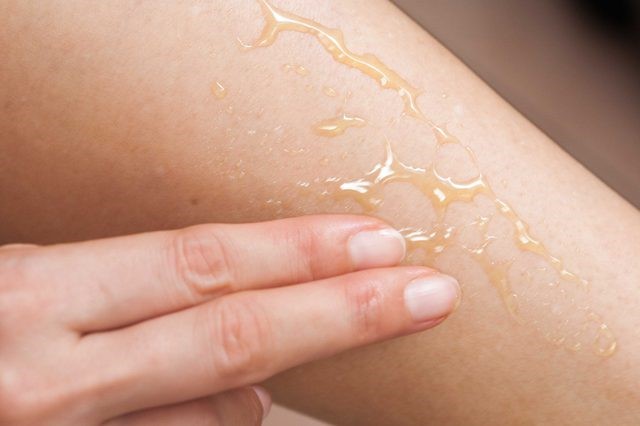Injury, burns, acne, or surgery can cause unsightly scarring that may take away your confidence and make you feel less of yourself. As long as the scars are hidden by your clothing, they might not overly concern you. However, if they’re in visible spots like on the face and you’ve been trying to avoid going out in public, it may be time to take action. To begin with, understand that the specific scar removal technique you choose largely depends on the kind of scar you have. Further, your dermatologist might advise you on the solutions depending on your race, age, gender, and genes. You must also remember that the results of any treatment you take could vary according to your body’s healing capabilities.

Understanding the Types of Scars
When you sign up for treatment for injury scar removal, the dermatologist will conduct a detailed investigation into the scar, the scope, and the area of the face or body where it is located. In case you’ve had the scars for only a short while, she may recommend that you wait for at least a year before getting any treatments. That’s because most scars lighten considerably in that time. Here’s some added information you’ll receive regarding types of scars:
- Keloid Scars occur in the form of raised tissue over the wound. They are the result of an overactive production of collagen that sometimes extends beyond the rims of the actual injury.
- Hypertrophic Scars appear red in coloring and are also raised above the surrounding skin. However, their scope is restricted to the original injury.
- Acne scars are typically depressed and can be of various kinds depending on the severity of the condition you had.
- Contracture scars typically form on a burn site and sometimes extend below the surface to the muscles and nerves. These scars are not only uneven in appearance but because they are tough in texture, they can make movement difficult.

Scars Form Because of an Uneven Repairing of the Skin
Before talking about the scar removal options you can use, it is important to understand the healing processes of the body. As studies conducted at the National Center for Biotechnology Information reveal, each time you have an injury, the body responds by covering the area with a new tissue and repairing the torn skin. However, the new fibers don’t heal with an even alignment like undamaged tissues. As a result, you see scarring. Further, when the healing of an injury begins, the body forms a protective scab on it and begins repairing the tissues at the top layers. With each new layer of collagen under the top layer, the area raises until you see the unsightly marks.
In the case of acne, the process is reversed. That’s because acne results from bacteria, impurities, and a buildup of sebum inside the lower layers of the skin. Breakouts damage the skin in spots that the body repairs from inside out, which is why you see pitted and depressed scars.
Although it is not possible to completely erase the marks, you can use scar removal procedures to lighten them so that they are barely visible. Try these 3 tips:

Tip No. 1 – Natural Remedies to Lighten Scars
Surprisingly, some of the most effective remedies for scar removal can be found on the shelves of grocery stores. You can make salves and packs with these ingredients or massage them on the scars and allow them to work on your skin:
- Applications of honey by itself or mixed with milk cream
- Vitamin E oil, coconut oil, olive oil, or tea tree oil massages
- Applying lemon juice – also helps to lighten the skin
- Massaging with cocoa butter
- Applying a paste with sandalwood powder, rose water, and milk or smearing sandalwood oil
Tip No. 2 – Natural Platelet Rich Plasma Sourced from Your Blood
PRP for acne and injury scars is one of the most innovative of treatments available today. PRP treatments can help you erase both old and new scars whether raised or depressed.To get this procedure, you’ll have to consult a dermatologist trained and licensed to perform Platelet Rich Plasma (PRP) therapy for scar removal. To erase the scars, he’ll use the PRP serum that is sourced from your blood by spinning it at high speeds. When placed under the scar tissue, the serum sets off a healing reaction thanks to the platelets, growth factors, cytokines, and stem cells it contains.
In the case of acne marks, PRP regenerates the collagen below the skin so that it produces new cells and raises the depressed scars. However, if you have other kinds of scars, the dermatologist might choose to remove the scar tissue and place the serum in the open area later covering it with dressing and allowing normal healing. As an article in Medscape describes, PRP can create a matrix of proteins within the wound that tissues use as a frame to repair. Not only are the chances of infection minimized but the wound heals quickly leaving behind a minimum of any fresh scarring. To ensure best results, doctors work on small sections at a time.

Tip No. 3 – Non-Ablative Lasers
As the American Society for Dermatologic Surgery reports, scars can be erased with the help of lasers. Using a light at special wavelengths, non-ablative lasers incur minute injuries in the skin below the scars effectively heating it. In response, the skin produces new collagen cells. If the scars are raised, they’ll gradually soften and blend in with the surrounding skin. However, if the scars are depressed, the collagen plumps and fills them so that the skin regains a smoother appearance.
You Can Get Back Beautiful Skin with Scar Removal Treatments
Given the wide range of non-invasive and minimally invasive treatments available today, you no longer need to live with injury scars. Your dermatologist can recommend the best option that is suitable for your particular skin type and kind of scars you have. By opting for the procedures, you can get back smoother, glowing skin. And, with it, your lost confidence.
About The Author:
Marcia Jordan is a Health & Lifestyle writer. She loves to write articles on health, lifestyle, and Food. While She is not writing she loves to cook, read the novel and walk in the evening.


![[Infographic] Establishing A Clear Channel Of Communication In Healthcare Channel-Of-Communication-In-Healthcare](https://www.safeandhealthylife.com/wp-content/uploads/2023/10/Channel-Of-Communication-In-Healthcare-1-150x150.webp)

